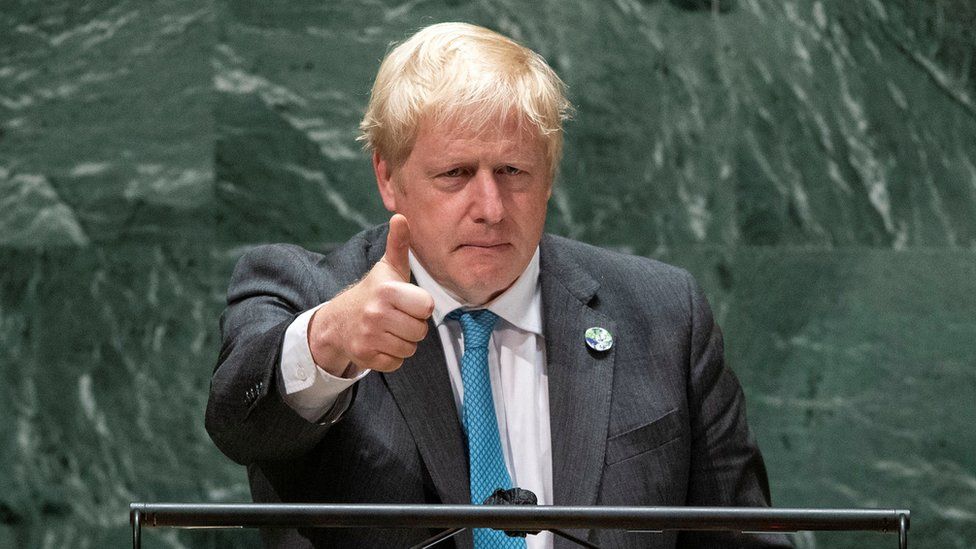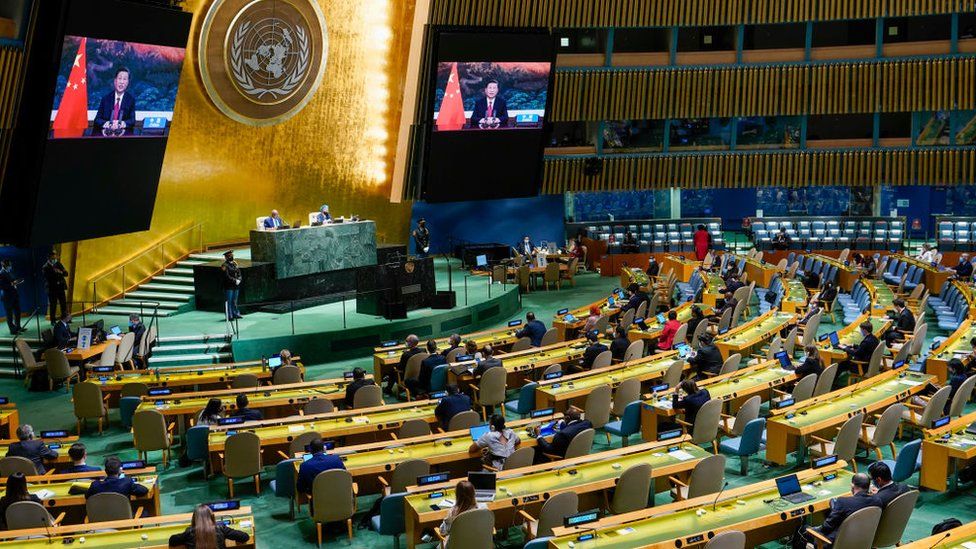OUT OF THE FRYING PAN INTO THE FIRE
NuScale signs agreement with new Polish partners to replace coal
24 September 2021
NuScale has signed a second agreement to consider its small reactors as a general replacement for coal units in Poland. The US small reactor vendor will support two energy firms, Poland-based Unimot and USA-based Getka, in their joint work to explore the possibility.
.jpg?ext=.jpg) The heads of Getka, NuScale and Unimot yesterday (Image: Unimot)
The heads of Getka, NuScale and Unimot yesterday (Image: Unimot)Poland uses coal as fuel for over 70% of its electricity, as well as half of its heat supply to district heating networks and industry, but is still to announce a definitive policy to fully transition away from this fossil fuel. In recent months Polish industry has taken the matter into its own hands, showing increasing interest in nuclear power.
The latest Polish energy player to consider small reactors is Unimot, which imports liquid and gas fuels as well as electricity for sale on Polish retail and wholesale markets. Unimot already works with a USA-based company called Getka, and yesterday the two signed an agreement with NuScale to explore whether its 77 MWe NuScale Power Module could be deployed "as a coal repurposing solution for existing coal-fired power plants in Poland."
"We are pleased that this is another area to develop low-emission projects in Poland, where we can be as involved as the Unimot Group in decarbonisation," said Adam Sikorski, president of the management board of Unimot.
"Our role will be promoting SMR technology as a reliable alternative for coal technologies, and acquiring business partners in the Polish market, said Sikorski. "Ultimately, we also intend to create a platform of collaboration with Polish academic centres and potential Polish component suppliers to develop this technology in our country. Because of this, we can actively support the energy transformation of Poland, simultaneously diversifying our group's business," he said.
Dariusz Cichocki, chairman and CEO of Getka Group said, “This project aligns with our commitment to decarbonise and diversify Poland’s energy infrastructure.”
Latest in a trend
The agreement was announced yesterday after a similar deal between NuScale and Polish copper and silver producer KGHM, which will analyse technical, economic, legal, regulatory, financial and organisational factors in using NuScale plants as replacement for coal units.
Marcin Chludziński, president of KGHM's management board, said climate change is forcing "decisive actions", with the impact already being felt financially through increases in energy prices. "The construction of small nuclear reactors by 2030 is a solid declaration and an element of our energy transformation. We are pioneers in Poland, as we expect that the first of our nuclear power plants will come online in 2029," he said.
Another collaboration is underway regarding GE-Hitachi's BWRX-300 reactor design as a potential replacement for larger coal units and to power industrial sites. Synthos Green Energy, a subsidiary of the Polish chemical group Synthos, is GE-Hitachi's partner and is looking to support the deployment of nuclear units at power plants and energy intensive chemical plants.
Polish companies sign MoUs on SMR deployment and supply chain
23 September 2021
Two separate agreements have been announced between Polish companies and North American small modular reactor (SMR) vendors and suppliers. A memorandum of understanding (MoU) between Cameco, GE Hitachi Nuclear Energy (GEH), GEH SMR Technologies Canada, Ltd and Synthos Green Energy (SGE) will see those companies evaluate a potential Canadian supply chain for a fleet of BWRX-300 reactors in Poland. Separately, NuScale Power, KGHM Polska Miedź SA (KGHM) and Piela Business Engineering (PBE) are to explore the deployment of NuScale's SMR technology to repower or repurpose existing coal-fired power plants.
.jpg?ext=.jpg) GEH's vision for BWRX-300 (Image: GEH)
GEH's vision for BWRX-300 (Image: GEH)
SGE is a member of the Synthos group, one of the biggest producers of chemical raw materials in Poland, which is interested in obtaining affordable, on-demand, carbon-free electricity from a dependable, dedicated source. SGE and GEH have previously agreed to collaborate on the potential deployment of the BWRX-300 in Poland.
SGE President Rafał Kasprów said the company is, in addition to the MoU, working closely with GEH to identify "supply chain opportunities" in Poland that complement the export capabilities being developed in Canada for the BWRX-300.
Uranium supplier Cameco also supplies uranium refining and conversion services to the global nuclear industry and in July this year agreed with GEH and Global Nuclear Fuel-Americas to explore several areas of cooperation to advance the commercialisation and deployment of BWRX-300 SMRs in Canada and around the world.
"We believe nuclear energy will play a major role in helping countries and companies around the world achieve their net-zero emission targets," Cameco President and CEO Tim Gitzel said. "This MoU is a great example of the kind of innovative solutions businesses like Synthos Green Energy are exploring and how SMRs could contribute to industry-driven efforts to decarbonise."
The BWRX-300 is a 300 MWe water-cooled, natural circulation SMR with passive safety systems that leverages the design and licensing basis of GEH's US Nuclear Regulatory Commission-certified ESBWR.
Repurposing coal plants
.jpg.aspx)
(Image: @NuScale_Power)
The MoU announced today by NuScale Power, copper and silver producer KGHM and business engineering advisory consultancy PBE will see the three companies explore the deployment of NuScale's SMR technology as a repowering or repurposing solution for existing coal-fired power plants and electricity and heat for KGHM's industrial processes in Poland. "This agreement demonstrates international interest in utilising NuScale's SMR technology to produce clean, reliable, and affordable energy," the companies said.
Under the MoU, NuScale will support KGHM and PBE's examination which will include an analysis of technical, economic, legal, regulatory, financial, and organisational factors.
NuScale Chairman and CEO John Hopkins said the retirement of ageing coal-fired power plants is leading to changes in power generation, infrastructure needs, and workforce opportunity. "NuScale's SMR technology is an ideal flexible clean energy solution to repurpose retiring coal fuelled power plants and most importantly, retain and retrain the skilled power plant workforce already in place in these Polish communities," he said.
Marcin Chludziński, president of KGHM's management board, said climate change is forcing "decisive actions", with the impact already being felt financially through increases in energy prices. "The construction of small nuclear reactors by 2030 is a solid declaration and an element of our energy transformation. We are pioneers in Poland, as we expect that the first of our nuclear power plants will come online in 2029," he said.
"SMR technology will not only help us to protect the environment but will also substantially reduce the costs of operating our business," he added. "This is one of the recently-announced initiatives aimed at growing the company, and we plan to generate power commercially in order to assist in the green transformation of Poland and bring down costs for the average household."
Modular energy sources will play an "exceptionally important role" in the energy sector, PBE Managing Partner Piotr Piela said. The SMR, he said, is not only a crucial component "fitting energy transformation of Poland and many others fossil fuels-dependent EU countries", but also a 'technology of common interest' essential to the successful implementation of the "Pan European Green Deal".
NuScale's SMR features a 77 MWe Power Module using pressurised water reactor technology, deployed in power plants housing up to four, six or 12 individual power modules. In August 2020, it became the first, and so far, only, SMR design to receive approval from the US Nuclear Regulatory Commission.
Polish chemical producer Ciech recently announced it will consider nuclear technologies to replace coal burnt for power and process heat in its plants, and signed a Letter of Intent to cooperate with SGE.
Researched and written by World Nuclear News








